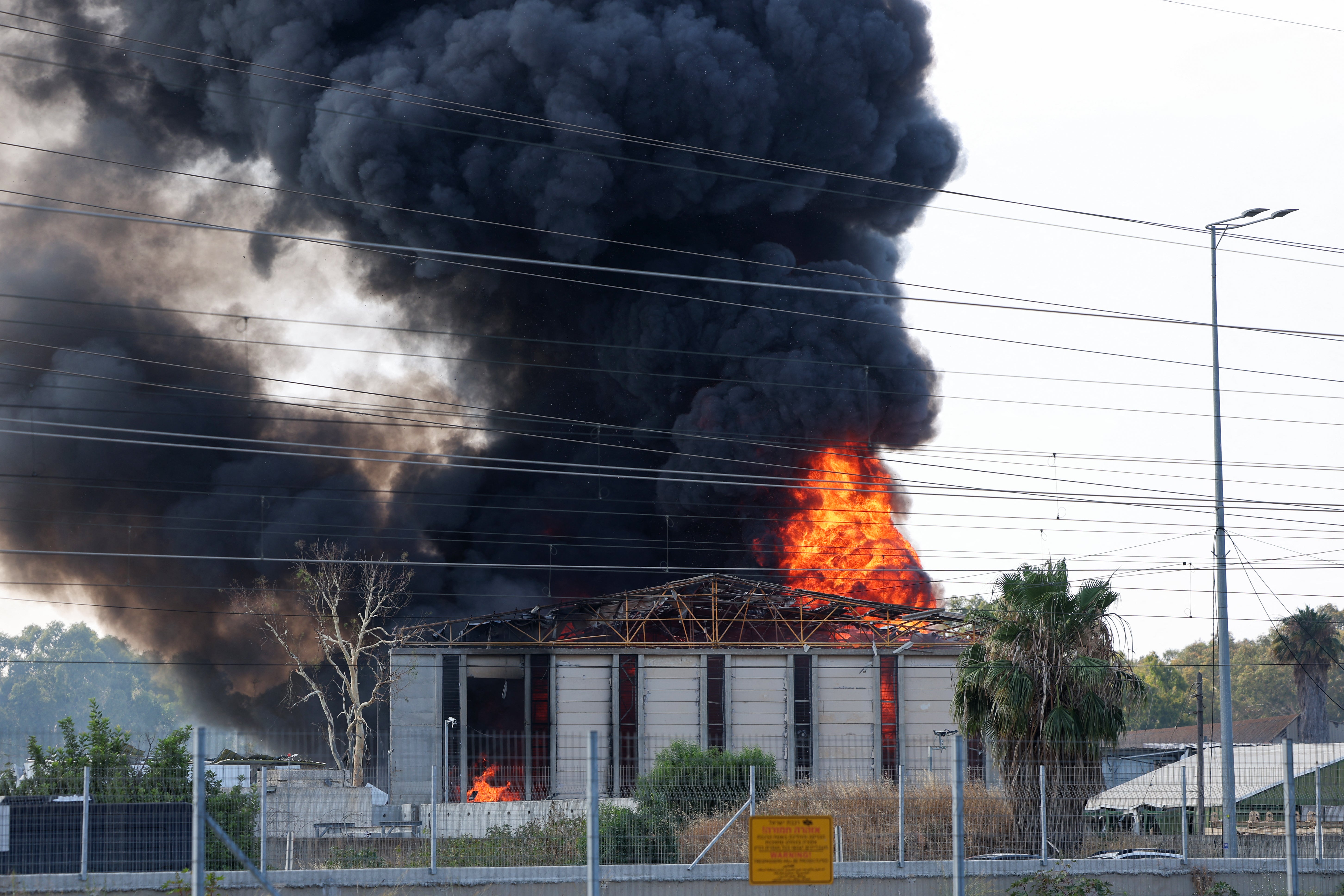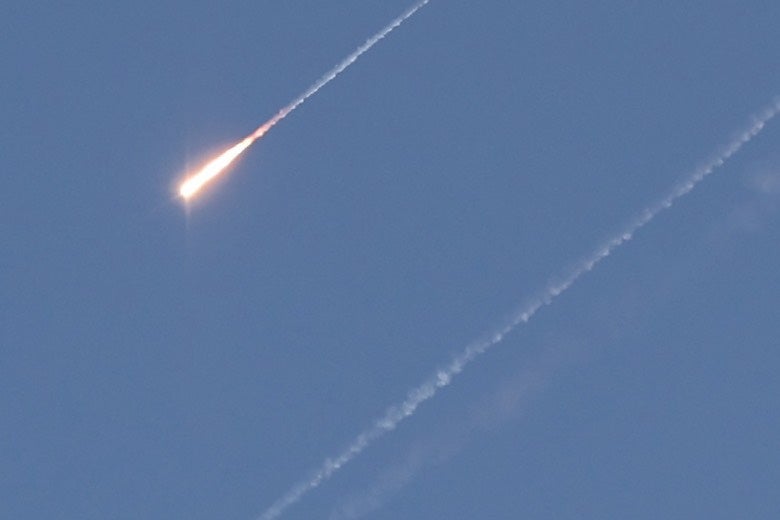How has Iran managed to breach Israel’s Iron Dome air defence system?
For many years, Israel’s multilayered air defence system has repelled missile attacks from Hamas and Hezbollah. Two experts explain how Iranian missiles have broken through
A bloody conflict between Israel and Iran entered its sixth day on Wednesday, as both countries exchanged heavy air strikes.
The conflict began with Israeli strikes on nuclear sites in Iran and on its capital of Tehran on Friday. Israel says Iran is secretly developing a nuclear weapon, something which Tehran has consistently denied.
At least 224 people have been killed in Iran and 24 people killed in Israel since the conflict erupted last week, according to authorities in both countries. Iran has not been regularly updating its death toll, and Washington-based group Human Rights Activists says at least 585 people have been killed as of Wednesday.
The Iron Dome is a surface-to-air missile system which tracks and intercepts projectiles headed towards populated areas in Israel. It is one of many defence systems used by the IDF, including the US-made Thaad system, David’s Sling, and the Arrow 2 and Arrow 3 defences.
Israeli officials have long accepted that its air defence system is not 100 per cent effective. Here The Independent looks at why Iran’s attacks have breached Israel’s strong defences.

What systems make up Israel’s advanced air defence?
The Iron Dome is the best known of Israel’s air defence systems, designed to target shorter-range rockets which larger systems are unable to detect.
David’s Sling is designed to destroy longer-range rockets. Arrow 2 targets short-to-medium range ballistic missiles and Arrow 3 targets long-range ballistic missiles.
The most recent addition to Israel’s air defence is the US-made Thaad battery, which can intercept missiles inside and outside the Earth’s atmosphere. It targets enemy missiles in their last stage of flight, within around 150-200km.
Israel’s air defence ‘effective but not invincible’
Dr Marion Messmer, a senior research fellow of security studies at Chatham House, said Israel’s air defences may not be as effective as many believe.
Speaking of the Iron Dome in particular, she told The Independent it has “better PR than is actually warranted”.
She added: “At the end of the day, it's an air defence system. It's a very effective air defence system. But no air defence is completely unbreachable.”

Given the scale and scope of Iran’s strikes on Israel - which have been more sustained than attacks in recent years - Dr Messmer said it is not a surprise that some of the missiles and drones were able to get through.
“Part of the Iranian strategy is essentially to fire a lot, and therefore to hope that the interceptors won't be able to shoot everything down, which is one of the things that we've seen.”
Iran’s missiles pose new type of challenge
Experts believe that Iran may have also used hypersonic glide vehicles (HGVs), which can manoeuvre and glide at hypersonic speed, making them a lot harder to intercept.
“If you've got something that can manoeuvre, then obviously you can either pre-program an erratic flight path, or you can change it if you see that interceptors have been launched. That then makes it much easier to avoid any interception,” Dr Messmer explained.
Dr Messmer maintains that the Iron Dome’s defence rates are still “incredibly impressive”, but added a caveat: many of the rockets previously shot down by the system come in smaller numbers with predictable flight paths and from predictable sites. These have mostly been fired by Hamas militants in Gaza.
“No air defence system is unbreachable,” agrees Dr Marina Miron, a postdoctoral researcher in King’s College London’s War Studies department.

Volume of missiles ‘leaving Israel’s air defence overwhelmed’
Iran's Revolutionary Guards on Monday said they had employed a new method that caused Israel's multi-layered defence systems to target each other and allowed Iran to successfully hit many targets.
Dr Miron speculated that this may have been done by positioning decoy drones near Israeli defence missiles, in such a way that it would cause another Israeli missile to wipe it out.
But the main cause of the most significant breach to Israel’s air defence in years, she said, is the sheer “overload” of Iranian missiles which left it “overwhelmed”.
The rare aspect of the last five days is the sheer number of missiles sent by Iran, she added, rather than the air defence unexpectedly faltering.
Iran would have sent a number of decoys, causing Iron Dome projectiles and other defence missiles to be wasted on what is in effect scrap metal, Dr Miron added.
Electronic warfare also could have been used, Dr Miron added. “Suppressing the radar is another option - the missile will have a component which allows it to fly invisible.”
Join our commenting forum
Join thought-provoking conversations, follow other Independent readers and see their replies
Comments